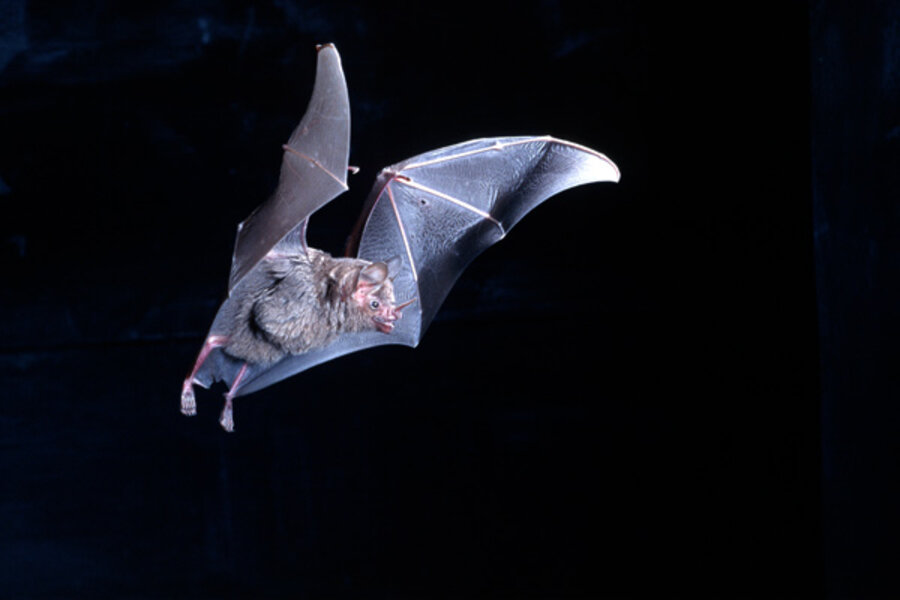Robots with night vision? Scientists work with fruit bats for better robo-vision
Loading...
Researchers are studying how the echoing sound waves that bats use to navigate and hunt at night could help robots similarly get around in their environments.
Bats can "see" in the dark by sending out sound waves that bounce back to the bats' ears from objects such as fruit on trees and flying insect prey. This so-called echolocation or biosonar might be a simpler way for robots to perceive shapes than pattern recognition programs and other robo-vision concepts.
"We aim to understand the echolocation process that bats have evolved over millennia, and employ similar signals and techniques in engineering systems," said Simon Whiteley from the Centre for Ultrasonic Engineering at the University of Strathclyde, who is lead author of the paper published this week in Bioinspiration & Biomimetics.
IN PICTURES: Developments in robotics
Sounding off
Whiteley and his colleagues recorded the echolocation calls of six Egyptian fruit bats that were mounted with miniature wireless microphone sensor.
The bats generate these calls with "clicks" from their tongues that fill their surroundings with acoustic energy. The pace of the return of the sound waves sketches the dimensions of the bats' environment and lets them zip around even when lighting is quite poor.
During echolocation, some bats are known to use a natural acoustic gain control. This allows them to emit high-intensity calls without deafening themselves, and then to hear the weak echoes returning from surrounding objects.
The researchers replicated this system in electronics to allow the sensor to record both the emitted and reflected echolocation signals, providing an insight into the full echolocation process.
The six bats performed up to sixteen flights each along a flight corridor. Each flight was short – lasting only about three seconds – but, with the bats' clicks only lasting a quarter of a millisecond, a large number of calls were recorded for the scientists to analyze.
Organized noise
Once back into the laboratory, the researchers were able to accurately recreate the echolocation calls using a custom-built ultrasonic loudspeaker.
This technique will allow the signals and processes bats use to be applied to human engineering systems such as sonar. Specifically, the researchers are looking to apply these techniques in the positioning of robotic vehicles used in structural testing applications.
A number of other creatures, including dolphins and shrews, rely on reflected sound waves to "visualize" aspects of their world. The application of a biological process such as echolocation honed over eons of evolution may serve as another example of machines being made better by looking to life for inspiration.
• Computer Vision Sees Better by Focusing on the Small Things
• Military Eyes 'Smart Camera' to Boost Robotic Visual Intelligence
• Bionic Humans: Top 10 Technologies





